9 String
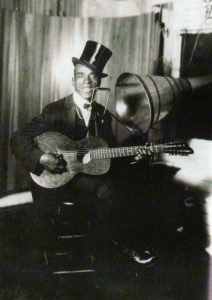 A few years ago my friend Mike Ammons and I were looking at the liner notes to the very excellent CD of minstrel tunes, Good For What Ails You, on the Old Hat label, and Mike asked me “What kind of guitar is that?”, commenting on a picture of Daddy Stovepipe. I hadn’t really looked at the picture that closely as there are plenty of odd things going on, a musician in a top hat posing next to a recording horn. We got out the magnifying glass and saw that the odd shaped headstock had 9 strings, three single strings on the bass side and three courses (six strings) on the treble side. Neither of us had heard of a nine string before, and I thought it would be a fun side project.
A few years ago my friend Mike Ammons and I were looking at the liner notes to the very excellent CD of minstrel tunes, Good For What Ails You, on the Old Hat label, and Mike asked me “What kind of guitar is that?”, commenting on a picture of Daddy Stovepipe. I hadn’t really looked at the picture that closely as there are plenty of odd things going on, a musician in a top hat posing next to a recording horn. We got out the magnifying glass and saw that the odd shaped headstock had 9 strings, three single strings on the bass side and three courses (six strings) on the treble side. Neither of us had heard of a nine string before, and I thought it would be a fun side project.
I could tell from the photo that the guitar was an inexpensive Chicago made guitar, smaller in size. Since I didn’t have any orders for a nine string, and seeing as it didn’t seem likely that I’d get one, I decided to start by making a neck and fitting it to an existing body. I had a couple candidates, the leader being an old Regal whose neck had been boogered up by someone along the line. The Regal was an all birch Hawaiian model. 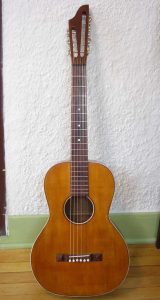 The top was in pretty rough shape, so I decided that it would probably be best to replace that while I was at it. I know what you’re saying, “Why didn’t you just start from scratch?” At a certain point I think I asked myself the same question, but these things tend to snowball, and when you’re obsessed and have to get something out of your system, you don’t always make the most prudent decisions.
The top was in pretty rough shape, so I decided that it would probably be best to replace that while I was at it. I know what you’re saying, “Why didn’t you just start from scratch?” At a certain point I think I asked myself the same question, but these things tend to snowball, and when you’re obsessed and have to get something out of your system, you don’t always make the most prudent decisions.
I put on a new spruce top and made a poplar neck for the guitar. Lots of folks don’t take poplar seriously as a neck material, but as I’ve said before and I’ll say again, it’s great stuff. I’ve made several poplar necks and have never had issues with them. The 80 year old guitar that I play on a regular basis has a poplar neck with no reinforcement and it’s as straight as the day it was made. I’d choose it over maple any day of the week. I made a rosewood fingerboard and a six pin pyramid bridge.
The guitar had a short scale of 24 5/8″, so I put on light gauge strings (doubling the 1st and 2nd course with an octave on the third) and tuned it up to E. I was pretty happy with the way that it turned out. Definitely a lot of fun to play. I sent it around to some friends, one of whom, John Miller, decided that he would rather keep it than send it off, so we worked out a deal. I was very happy to see it go to such a fantastic player.
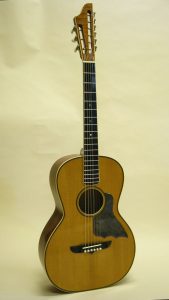 As these things tend to work, I eventually got an email from someone who inquired about the nine string. Gary Selufsky, who proved to be one of my bravest customers, put in an order for a nine string and decided to have fun with it. I was very excited that Gary decided to get maple back and sides and a poplar neck. He also decided to add a Kay Kraft type bridge, funky pick guard, bound headstock and fingerboard. I was really looking forward to building an uptown version of the guitar.
As these things tend to work, I eventually got an email from someone who inquired about the nine string. Gary Selufsky, who proved to be one of my bravest customers, put in an order for a nine string and decided to have fun with it. I was very excited that Gary decided to get maple back and sides and a poplar neck. He also decided to add a Kay Kraft type bridge, funky pick guard, bound headstock and fingerboard. I was really looking forward to building an uptown version of the guitar.
The guitar turned out great. After some experimentation with strings, we decided that the it was happiest with a set of extra light strings, doubled on the 1st, 2nd and 3rd courses.
I was very happy to hear that Gary and John met at the Country Blues Week at the Port Townsend Washington and were able to compare their nine strings. My only regret is that I wasn’t there to hear the ensuing madness.
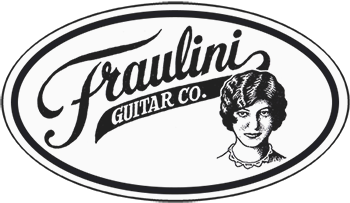

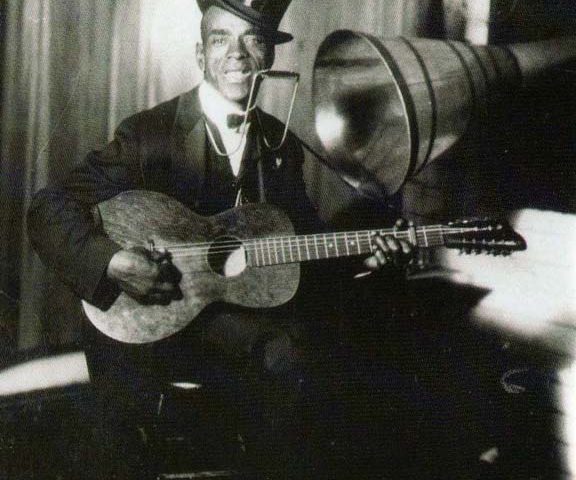
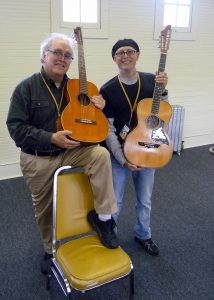

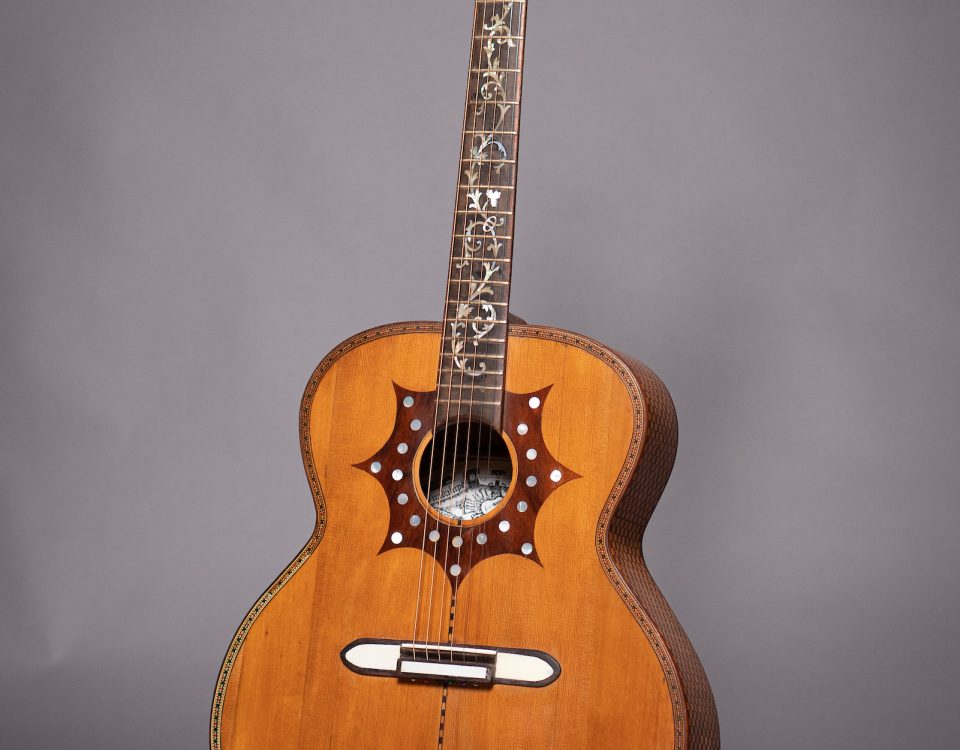
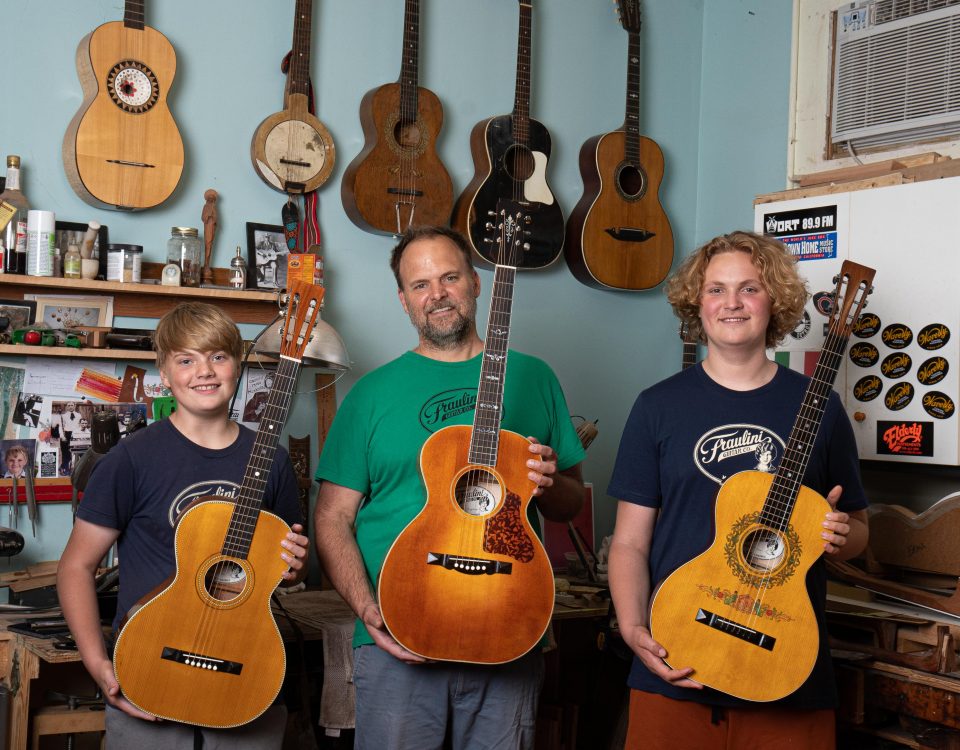
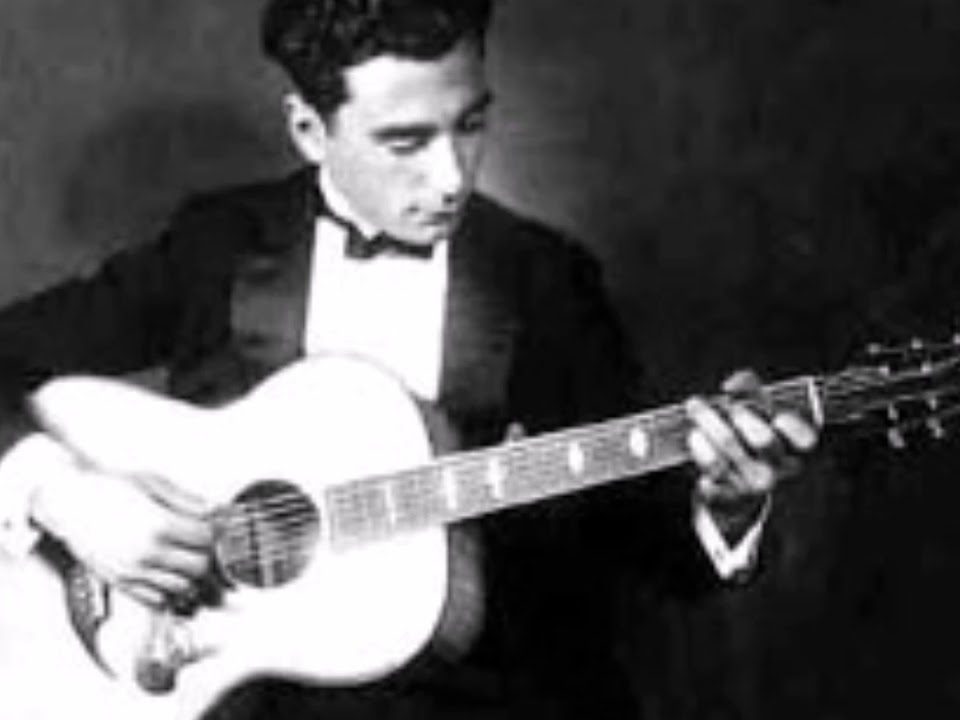


3 Comments
There’s a sucker born every minute!
I’ve named her “Miss Vestapol” because Dadf#ad was way too hard to pronounce.
Cheers!
Didn’t Big Joe Williams play 9 string exclusively? I saw his ax hanging on the wall at the Jazz Blues Mart in Chicago. Looked to be a big ass Harmony-Stella with 3 extra tuning machines clumsily bolted to the head stock. Never new it was a production ax.
I hope Gary and John got to see Kit "Stymee" Stovepipe keeping up the top-hatted busking tradition on the streets of Port Townsend.
Brilliant guitars.